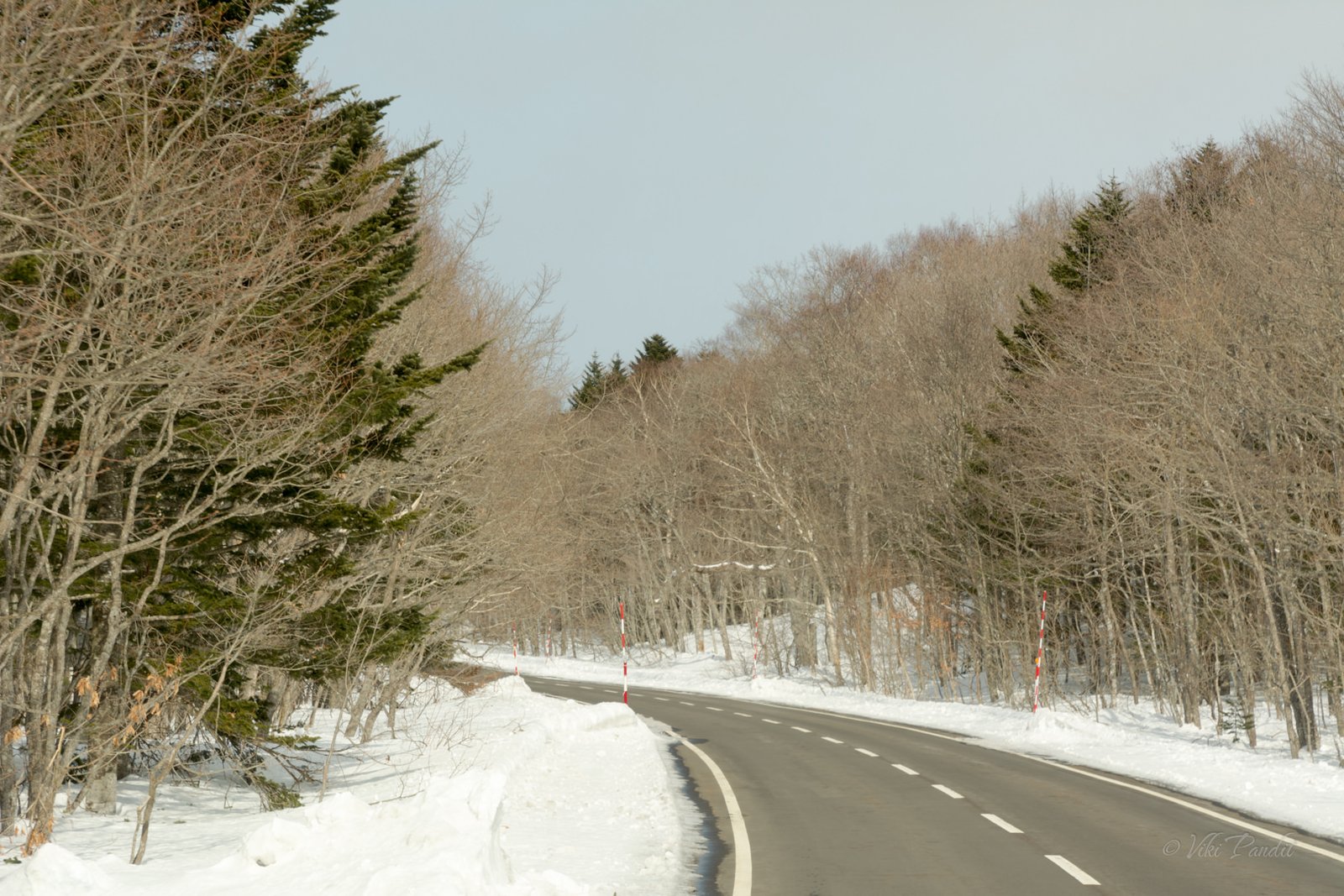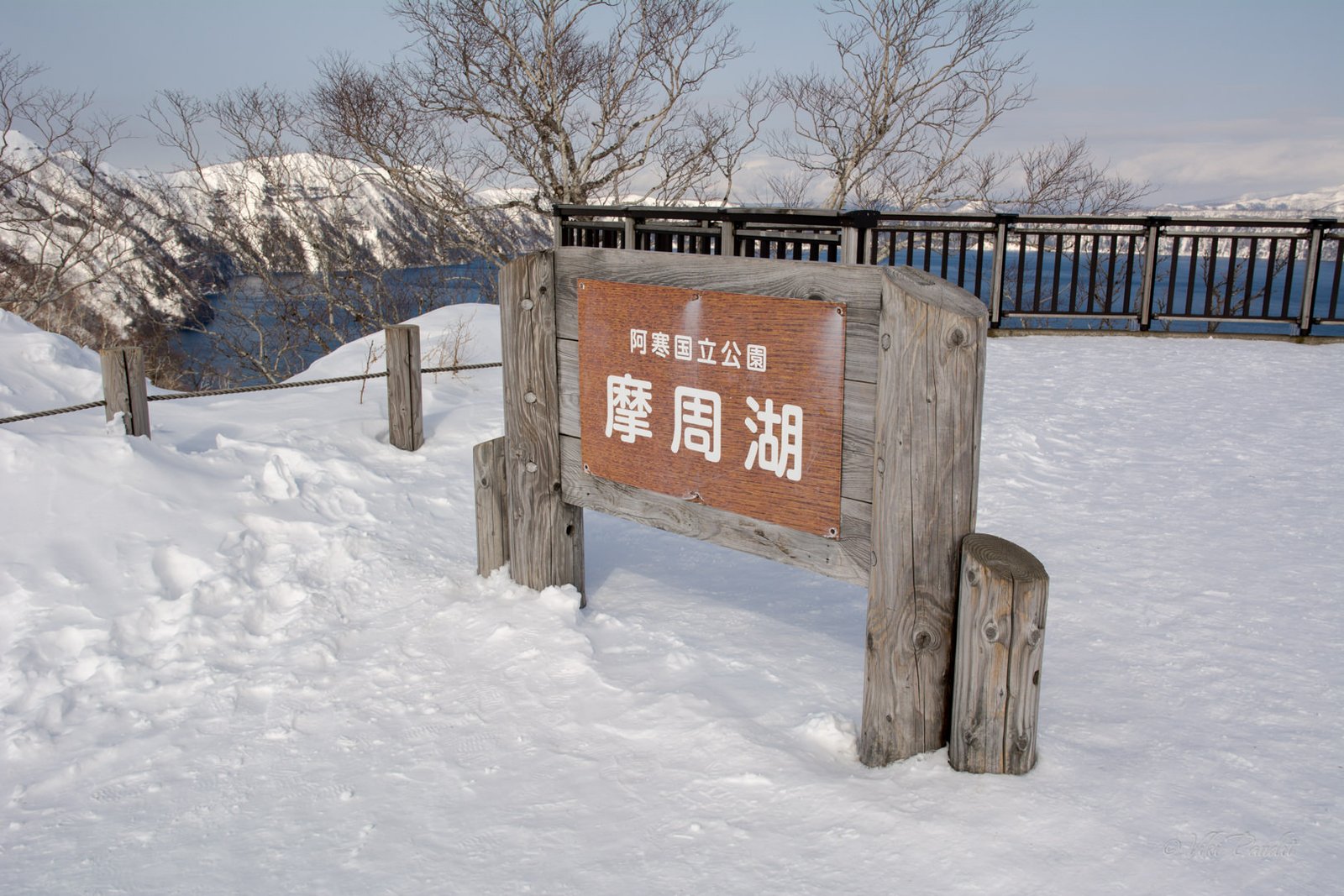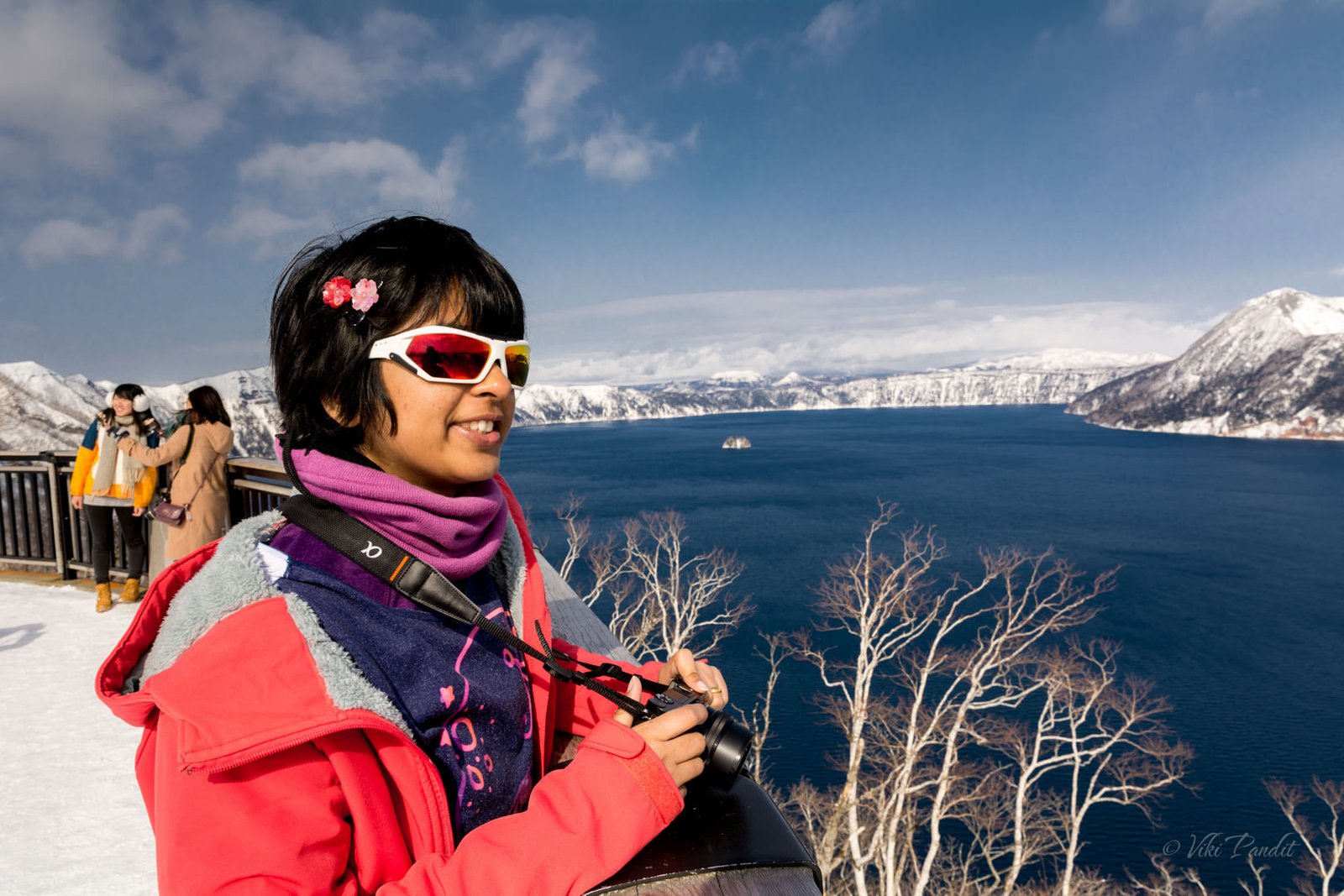After the extra-terrestrial experience at Mount Iwo, we were on our way to Lake Mashū (摩周湖). It was pretty obvious that our guide, Shitona, was in love with the lake and she kept telling us over and over, how beautiful the lake looked on a bright sunny day. Although it is usually adored for its clear blue water, the lake is frequently blanketed in heavy fog and it is a rarity to view it at its scenic best.
Lake Mashū or Mashūko, is the smallest of the three caldera lakes in Akan National Park. The comma-shaped lake with a circumference of 20 km originated from volcano activity of Mt. Mashū some 32,000 years ago. The lake is surrounded by steep crater walls, 200 meters high with no inlets or outlets Along with Lake Baikal in Siberia, it is classified as one of the most transparent lakes of the world.
We were again surrounded by Spruce forests.
After many twists and turns we finally arrived at the lake. The bus dropped us off near the parking lot. The path was slippery with frozen ice all over the place. Near the parking lot, one can also find toilets and a large shop selling snacks and souvenirs.
We walked up to the big observation deck. Luckily for us it was a sunny day and the bright blue water of the lake looked stunning. I hadn’t taken the words of our guide seriously until that moment as I stood in awe at the sparkling blue lake.
The aboriginal Ainu used to call this lake, Kamuito which means “Lake of the Gods.” Over time, the Japanese began to refer to the lake by the neighboring peak, Mount Mashū. The Ainu name for this peak is Kamuinupuri or “Mountain of the Gods.” Surrounded by Mt. Mashū-dake, the deep blue mirror-like waters of Lake Mashū makes one wonder how this garden of Eden came down to Earth.
From the observation deck one can see Mt. Mashū towering on the eastern shore. Two volcanoes have grown out of the Mashū caldera. Kamuishu (divine island), a lava dome which rises from the middle of the lake, is one. The other is Mount Kamui, which forms the highest point on the eastern shore. In the caldera of Mt. Mashū, the steep crater walls around the lake make it a unique landscape. The volcanic activity keeps the lake from getting frozen unlike Lake Akan and Lake Kussharo.
On our left, we noticed a trail going over the ridge to an open area with some lovely bunch of trees. We decided to walk up to the beautiful peak. On our right it was a steep 200 m slope right to the edge of the lake. The knee-deep snow made it real tough to walk. Still it was safer than slippery ice.
At the peak it a lovely feeling with no one around us in that garden of Eden. I stood there, striving to mentally capture my favorite image of Lake Mashū and retain it in my memories. Time flies in these moments. After basking in the view for what seemed like only minutes, we walked back to the parking lot. I still had a few minutes on my time for the bus to leave, so I hurried down to the lower observation deck, behind the shops and took some unobstructed views of the lake. As of today, in my opinion, Lake Mashū is one of the two most beautiful lakes in Japan, the other being Lake Biwa.
Generally there tends to be a lot of fog at the lake. Most of my instagram friends warned me about it. However, from the end of January the lake is comparatively clear. On some days the temperature reaches -5℃ in the afternoon, so one must go properly equipped against the cold. After taking some wide shots of the lake, we walked back towards the bus. Once everyone was back on the bus, we left for Lake Akan.
Disclaimer: The information presented in this article is based on the time I visited the premises. Note that there might be changes in the prices of merchandise and admission fees that might have occurred after this article was published. At times the facility might also be closed for repairs or for variety of other reasons. Kindly contact the facility or facilities mentioned in this article directly before visiting.
Usage of this site indicates acceptance of my Terms and Conditions.
Credits: The historical information presented herein is gathered mostly from local guides that were re-inforced via historical writings.







I also visited this Temple in August 2024. It is really a wonderful Temple which requires more time to see all the details. Narayan dear park and these temples are worth to see. My Indian friend has described very well. I am also writing the things which I saw during my Japan visit and preparing a book for Marathi readers’ Chala jag phirya ‘